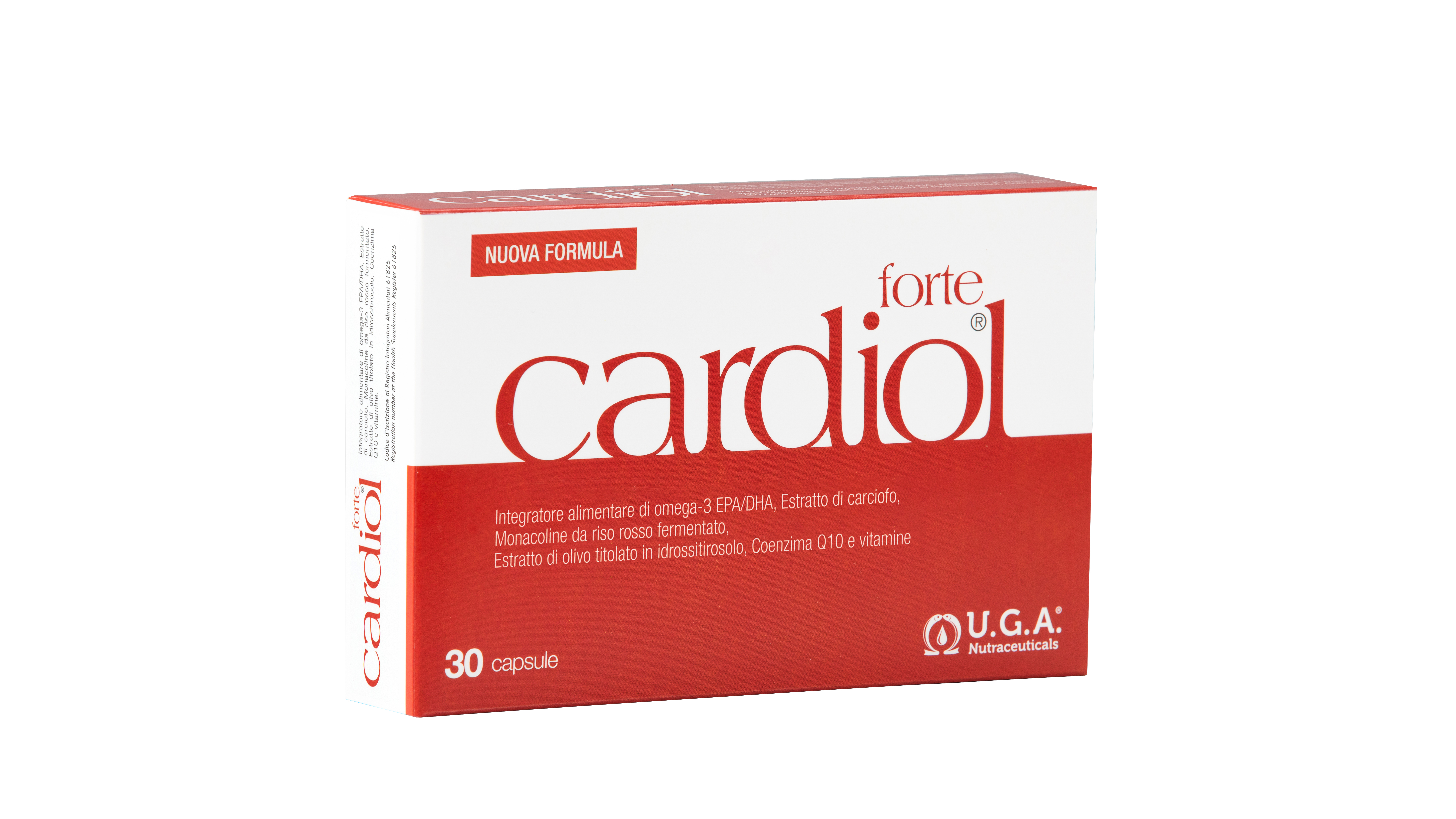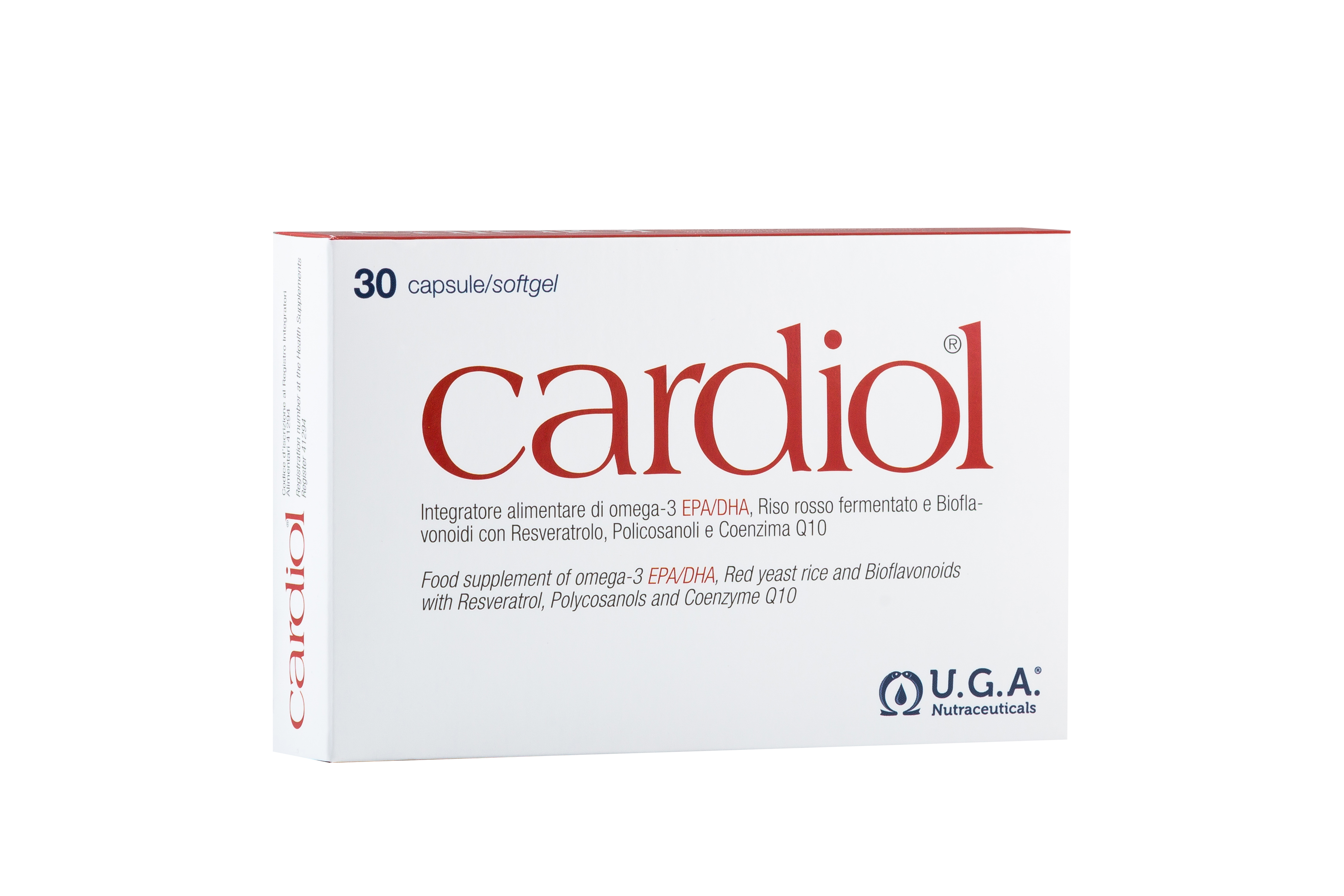
High cholesterol is the enemy of heart health. Here's how to fight it

High cholesterol is a major cardiovascular risk factor; excess LDL or "bad" cholesterol, in fact, can lead to occlusion of the arteries increasing the risk of heart attack or stroke. Physical activity and a healthy diet are the main strategies for keeping LDL cholesterol under control and increasing "good" HDL cholesterol, but sometimes these may not be enough and the use of specific drugs, such as statins, or dietary supplements is necessary.
Cholesterol: a molecule with multiple functions
Cholesterol is a lipid molecule, belonging to the steroid family, and is one of the basic constituents of the membrane of all animal cells. It plays an important role in regulating their fluidity by increasing the stability and flexibility of the membrane, thus making cell growth and division possible.
In addition, cholesterol is the basic substance for the synthesis of vitamin D, bile salts, and steroid hormones such as progestins, estrogens, glucocorticoid androgens, and mineralcorticoids.
This molecule is therefore absolutely important and necessary for the human body precisely because of its many physiological functions. Cholesterol is produced by liver cells through what is called "endogenous synthesis," but it can also be introduced through the diet, and is contained in foods rich in animal fats such as:
- meat
- butter
- cold cuts
- cheeses
- egg yolk
In contrast, it is absent in fruits, vegetables and grains.
Blood cholesterol: cholesterolemia
The transport of cholesterol through the blood is entrusted to to a group of particles, called lipoproteins, classified according to the amount of lipid present. Those characterized by a higher cholesterol content are 2:
LDL lipoproteins: transport cholesterol synthesized by the liver to all cells in the body. If LDL is in excess of the uptake capacity of various tissues, cholesterol can be deposited on artery walls; this is why in common parlance LDL is known as "bad cholesterol."
HDL lipoproteins: remove excess cholesterol from various tissues and transport it back to the liver, which then eliminates it through bile. This is why HDL is commonly referred to as"good cholesterol."
The cholesterolemia, or the concentration of total cholesterol in the blood, is measured in milligrams per deciliter (mg/dl) can be measured by a simple blood test.
Desirable blood cholesterol values are as follows:
- Total cholesterol: up to 200 mg/dl
- LDL cholesterol: up to 100 mg/dl
- HDL cholesterol: not less than 50 mg/dl
What are the health effects of hypercholesterolemia?
Hypercholesterolemia occurs when total cholesterol (LDL plus HDL) exceeds 200 mg/dl. High cholesterol does not produce direct symptoms, so it must be kept under constant control, through simple blood tests.
When the amount of cholesterol in the blood, and especially the amount of cholesterol carried in LDL, reaches values that are too high, the risk of atherosclerosis of arteries and vital organs increases.
Atherosclerosis is a pathological condition affecting the inner walls of the arteries, characterized by the presence of so-called atheromas; plaques consisting mainly of cholesterol, phospholipids, triglycerides, proteins and fibrous material. The formation of atherosclerotic plaques causes narrowing of the arteries and decreased blood flow, and over time can cause thickening and hardening of the blood vessel.
Plaques can break off and form thrombi and obstruct the lumen of vessels causing a sudden stop in blood flow. Depending on where it is located, obstruction of a vessel can result in myocardial infarction or stroke.
The causes of high cholesterol
Generally,mild hypercholesterolemia is due to a diet too high in fat; in fact, the cholesterol in foods can cause blood cholesterol levels to rise, varying from person to person.
In addition to poor diet, the other factors that mainly contribute to increased cholesterol are:
- overweight and obesity
- sedentariness
- metabolic diseases such asdiabetes
In some cases, special physiological conditions such as pregnancy and menopause; or pathological conditions such as liver disease, chronic renal failure, and hypothyroidism may also contribute. LDL cholesterol levels then tend to increase with age, especially among women.
Finally, there is an important genetic and hereditary component that predisposes to high cholesterol. Distinguished from mild hypercholesterolemia is a particular form of inherited hypercholesterolemia called familial hypercholesterolemia, due to a chromosomal mutation, in which the amount of cholesterol in the blood appears greatly increased from a young age, even if a healthy lifestyle is followed.
How to lower cholesterol in mild hypercholesterolemia?
Prevention is the main strategy to reduce high cholesterol and keep cholesterolemia within normal levels. Recommended lifestyles are therefore:
- follow a healthy diet
- replace saturated fats with mono- and polyunsaturated fats.
- reduce alcohol consumption
- control body weight
- exercise regularly
- avoid smoking
When cholesterol values become worrisome, it is essential to control the quantity and quality of fats consumed in the diet; studies around the world have shown that reducing the amount of saturated fats, cholesterol, and calories ingested can lower blood cholesterol levels, thus decreasing the likelihood of incurring cardiovascular disease.
What about when lifestyle is not enough? Anti-cholesterol drugs and supplements
Sometimes intervening in lifestyle is not enough to keep cholesterol levels under control, and it may be necessary to intervene pharmacological.
There are several categories of drugs that can reduce high cholesterol, but the most popular are statins whose main role is to slow down the hepatic production of LDL-cholesterol by deactivating an enzyme that enables its synthesis, HMG-CoA-reductase (3-hydroxy-3-methyl-glutaryl-CoenzymeA-reductase), and increase the liver's ability to eliminate LDL-cholesterol already in the bloodstream.
Statins can have several side effects, and should therefore be prescribed under close medical supervision.
In cases of mild hypercholesterolemia before resorting to medication, if lifestyle correction is not sufficient, dietary supplements can be used.
For years, nutraceutical dietary supplements based on fermented red rice and especially monacolin K have been a valuable support for those who could not control their cholesterol but did not need or want to take statins.
Fermented red rice
Fermented red rice comes from the fermentation of common cooking rice (Oryza Sativa) by a particular yeast, Monascus Purpureus. This rice, owes its name to the characteristic coloring, due to the yeast's production of several pigments including monascorubramine.
The property of fermented red rice is due to the presence of a group of substances, produced by Monascus Purpureus during fermentation, called Monacolines.
In particular, Monacolin K is truly a natural statin, and its chemical structure is identical to that of lovastatin one of the categories of cholesterol control drugs.
Other biologically active substances including B sitosterol, campesterol, sioflavones, and monounsaturated fatty acids are also present in red rice extract.
Today, however, monacolin K can no longer be used as it has been in the past: in fact, the European Food Safety Authority (EFSA) decided that the allowable dosages in supplements were too high for a substance that behaves in all respects like a drug. With the publication in the Official Journal of the European Union on June 2, 2022 of Commission Regulation (EU) 2022/860, monacolin K was added to the list of substances whose use is permitted only under specific conditions. Under the new provisions, all supplements that provide 3 or more mg of total monacolin K monacolines per day are prohibited, and the claim about the benefits of fermented red rice can no longer be used.
U.G.A Nutraceuticals produces three products for the health of your heart and cardiovascular system: Cardiol Forte and Cardiol:
Cardiol Forte is a dietary supplement containing EPA and DHA omega-3 fatty acids from highly purified and concentrated fish oil, Artichoke extract titrated to chlorogenic acid and luteolin 7-glucoside, monacolins from fermented red rice, Olive extract titrated to Hydroxytyrosol and Coenzyme Q10. Vitamin E, piperine and folic acid complete the formulation. Specifically, the powdered extract obtained from the leaves of artichoke Cynara cardunculus L. is titrated to 10 percent chlorogenic acid and derivatives (biophenols) and 2 percent luteolin 7-glucoside and derivatives (flavonoids). The biophenols in Artichoke extract have cholagogic, choleretic and hepatoprotective activities. In addition, the flavonoids present inhibit cholesterol biosynthesis and protect LDL from oxidative damage. In addition, intake of 250 mg of EPA and DHA daily contributes to normal cardiac function.

Cardiol is a dietary supplement containing omega-3 EPA/DHA, monacolins from fermented red rice, bioflavonoids, resveratrol, policosanols, and coenzyme Q10. Similar to Cardiol Forte, Cardiol contains omega-3, whose intake of 250 mg EPA and DHA per day contributes to normal heart function, and monacolins from fermented red rice. B vitamins, resveratrol, and policosanols complete the formulation. On the latter ingredient some scientific studies show their role in the oxidation process of LDL cholesterol.

Eulipid contains a substance, berberine, extracted from Berberis aristata; a plant widely used in traditional Ayurvedic medicine that facilitates the "capture" of cholesterol by the liver. Eulipid also contains resveratrol, bioflavonoids, tocotrienols, policosanols and coenzyme Q10 with antioxidant and circulatory protective action.

All supplements produced by U.G.A Nutraceuticals meet very high quality standards; and have obtained to ISO 9001:2015 certification; an additional guarantee of product quality and safety throughout their life cycle.





